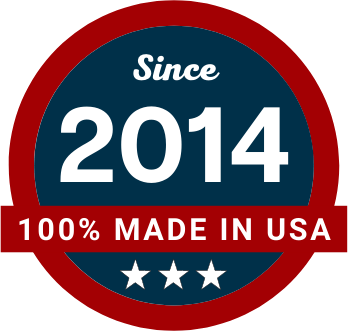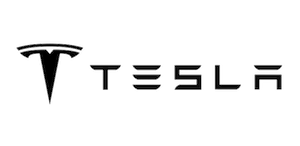Our data and power infrastructure must be as safe as it is reliable. LSZH cable, which stands for Low Smoke Zero Halogen cable, has come into widespread use for its specific safety features. This article provides a comprehensive overview of LSZH composition, properties, applications, and advantages. Unlike many other types of cable, LSZH is not engineered for a particular use, but rather to protect against a particular problem across an array of uses: the risk of deadly toxins in case of a fire.
What are Halogens?
Halogens are five elements-- fluorine, chlorine, bromine, iodine, and astatine-- which are often part of the chemical makeup of standard cable jackets, including PVC (polyvinyl chloride). They are highly reactive, which means they readily bond to other chemicals, forming new molecules. This characteristic makes them especially dangerous should they come in contact with biological organisms.
Traditionally, halogens have been used in the production of cables due to their fire-resistant properties, among other performance benefits. During a fire, these compounds "thermally degrade" into chemicals that interfere with the actual flame. However, while flame-retardant, the process that slows combustion releases toxic and corrosive gases, posing significant risks to human life, equipment, and the environment.
History and Development of LSZH Cable
The demand for safer and more environmentally friendly cable solutions gained momentum in the 1970s in response to increasing safety concerns. A number of deadly fires where smoke and toxic fumes led to high casualties shone a spotlight on the problem. These included a fire at Manchester's Woolworths in 1979, The King's Cross fire in London in 1987, and the Station Nightclub fire in the US in 2003. Especially in enclosed spaces such as certain buildings, transportation systems and data centers, a high concentration of cables and a lack of airflow combine to create toxic smoke in deadly concentrations, should a fire occur.
Over time, LSZH cable technology has evolved, with advancements in insulation and sheathing materials to enhance performance, durability, and fire-resistant properties. The demand for this cable has increased due to stringent safety regulations, heightened awareness of the importance of protecting lives and property, and the growing emphasis on environmental sustainability.
LSZH Properties and Benefits
- Low Smoke Emission: Designed to emit minimal smoke during combustion, ensuring improved visibility and reducing the risk of smoke inhalation during fire. This property enhances safety and aids in safe evacuation. According to the National Institutes of Health, over 60% of all sudden deaths at the scene of a fire are attributable to smoke inhalation.
Traditional insulating materials like Polyvinyl Chloride (PVC) contain a high percentage of carbon and hydrogen atoms, and when these materials combust, they produce a substantial amount of smoke due to incomplete combustion of carbon particles.
On the other hand, polymers such as polyethylene, polypropylene, and thermoplastic elastomers used in LSZH cables have different structures and compositions that lead to less smoke when combusted. They have a relatively simple chemical structure with a higher hydrogen-to-carbon ratio. When these materials burn, the high hydrogen content promotes more complete combustion, which reduces the amount of smoke and soot produced. The result is a "cleaner" burn, meaning less particulate matter (or smoke) is released into the air.
- Zero Halogen Content: Halogen-free jacket and insulation eliminates the release of toxic and corrosive gases when exposed to fire. They typically utilize polymers like polyethylene, polypropylene, or thermoplastic elastomers, none of which contain halogens. This feature protects both human life and sensitive equipment, reducing health risks and potential damage.
- Flame Retardant: This cable exhibits excellent flame-retardant properties, self-extinguishing when the ignition source is removed. In addition, LSZH materials are often designed to char or form an insulating, protective layer when exposed to fire. This charring process can further help to limit the amount of smoke produced, as it slows down the rate at which the underlying material is consumed by the flames. This characteristic helps prevent fire propagation and limits damage to surrounding infrastructure.
- Environmental Safety: Contributes to environmental sustainability by minimizing the release of hazardous substances into the atmosphere during combustion. Certain halogenated compounds can catalyze the breakdown of ozone molecules in the atmosphere, persist in soil and groundwater, and accumulate in the food change, causing a range of environmental and health problems. Reducing the production of halogen-containing materials is a more sustainable manufacturing practice.
- Moisture and Chemical Resistance: While polyethylene and polypropylene are inherently hydrophobic and resist the ingress of water, chemical resistance is more variable, and generally lower than PVC cables, depending on the specific polymer blend and additives used. LSZH cables can be highly chemical resistant, but a given cable's suitability should not be taken for granted, without checked the manufacturer spec sheet.
Applications of LSZH Cable
This cable finds extensive applications in industries and environments where there are likely to be many cables installed in confined spaces, with limited ventilation and evacuation options, and where high voltage may be present. Some notable applications include:
- Commercial Buildings
- Residential Construction
- Transportation and Infrastructure
- Data Centers and Telecommunications
- Industrial and Hazardous Environments
- Marine and Offshore Applications
- Military and Defense
- Healthcare Facilities
- Educational Institutions
- Renewable Energy
Categories of LSZH Cable
As we mentioned above, LSZH is one type of specification used across various categories. Low Smoke Zero Halogen options can be found among control cables, power, data, and fiber optic cables. LSZH tray cables are the most common category. While LSZH is not always required, when safety codes dictate, there is usually an LSZH option available. However, its material makeup and properties mean that it's not generally the default option for a given application. LSZH can be more expensive than PVC, for example, due to additional steps in manufacturing. And while LSZH products continue to improve in all areas of performance (like flexibility), if fire safety is not a top consideration, there are almost always an array of competing options that are just as (if not more) suitable for a task.
Safety Standards and LSZH
The Department of Defense first regulated halogen content in the MIL-C-24643 standard, limiting it to under 0.2% by weight. Standards concerning acid gas produced exist, but none explicitly address halogen levels. The National Electrical Code requires cables in plenum spaces to be "low smoke" rated, a mandate explored in the NFPA 262 standard.
Underwriters Laboratories (UL) has since 2015 addressed low-smoke and halogen-free ratings and now offers certifications for these cables based on the IEC 62821 and IEC 60754 standards. UL's HF and LSZH markings are applicable to various wire and cable types. Furthermore, UL's recognition program under UL 2885 has expanded to evaluate halogens, aiding manufacturers of various cable components.
LSZH vs. Riser or Plenum Cables
LSZH cable should not be confused with riser or plenum cables, as they are different classifications based on fire-resistant properties and installation requirements.
Riser cables are designed for vertical installations, such as in riser shafts or between floors of a building. They are constructed with fire-resistant materials to prevent the spread of fire from one floor to another.
Plenum cables are used in plenum spaces, such as the open areas above suspended ceilings or below raised floors. Plenum cables are designed to have low smoke and flame propagation characteristics, ensuring they do not contribute to the spread of fire or release toxic gases in air circulation systems.
LSZH, on the other hand, focuses on reducing the release of toxic gases and smoke during fire incidents. While it exhibits fire-resistant properties, it is not specifically classified for riser or plenum installations. However, low smoke zero halogen can often meet the fire safety requirements of riser or plenum applications depending on its specific construction and certifications.
Comparison to Alternatives
In addition to safety requirements with respect to smoke and toxicity, there are four primary factors to consider when deciding whether LSZH is suitable for your application.
- Stiffness: LSZH cables tend to offer similar flexibility and bend radius to traditional cables, but not always. LSZH is usually less suitable for continual flexing, or use in very cold environments.
- Price: Due to the specialized materials and manufacturing processes involved, LSZH prices typically run higher than basic options like VNTC, but less than or similar to XLPE or FREP/CPE options.
- Availability: While popular, LSZH is not the most common cable construction, which can mean lower stock and harder to find items.
We are always more than happy to help you find the right stock with the specifications to meet your needs. Give us a call! We can provide specific manufacturer spec sheets, so you can determine which offerings match your application.






